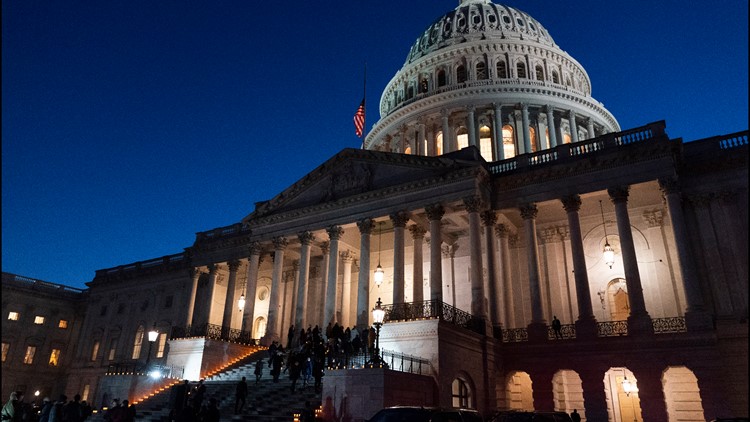Debate has heated up in the U.S. Senate over the filibuster — and the broader public debate is turning its attention toward the racial history of the filibuster.
The filibuster is how a minority in the Senate can prevent legislation from moving forward. A senator or a group of senators can prevent a bill from being voted on by indefinitely delaying it through speeches and debate. It takes 60 senators to vote for “cloture” to end a filibuster and move on to a vote on the bill itself.
That debate was inflamed by a March 23 quote from Senate Minority Leader Mitch McConnell, when he responded to a reporter’s question about the filibuster with, “it has no racial history at all. None. There's no dispute among historians about that."
Since then, many have countered McConnell’s claims and viral threads have emerged cataloguing the filibuster’s usage in preserving discriminatory laws and policies with quotes claiming the only bills that were stopped with filibusters between reconstruction and 1964 were civil rights bills.
Afterward, McConnell’s press secretary clarified that McConnell was speaking about “the origins of the filibuster.”
THE QUESTION
Does the filibuster have a racist history or a racist origin?
WHY WE ARE VERIFYING
Regardless of what McConnell meant, his exact words claiming the filibuster “has no racial history at all” has led to many Americans examining its history. There are a number of claims that tie it to a racist history and a number of others attempting to defend it from such claims.
THE ANSWER
We can verify that yes, the filibuster does have a racist history. It has been a useful tool for segregationists. That’s a facet of its history that even the Senate itself acknowledges in its descriptions of the filibuster.
The filibuster originated from an early Senate rule change and its first uses were in debates over the National Bank. It didn’t originate specifically to protect racist policy.
WHAT WE FOUND
First, it’s important to note that the Senate itself recognizes that the filibuster has had a “racial history” as McConnell put it — one that’s pretty deep at that.
In the Senate’s historical overview of the filibuster, it says the filibuster “proved to be particularly useful to southern senators who sought to block civil rights legislation, including anti-lynching bills. Not until 1964 did the Senate successfully overcome a filibuster to pass a major civil rights bill.” At the end of its overview, it notes the longest filibuster record for the “longest individual speech goes to South Carolina's Strom Thurmond, who filibustered for 24 hours and 18 minutes against the Civil Rights Act of 1957.”
On a separate page, the Senate describes what it took for a civil rights bill to actually overcome the filibuster in 1964 when it took 60 working days for the Senate to vote to end that filibuster. The Senate reiterates on this page, “never in history had the Senate been able to muster enough votes to cut off a filibuster on a civil rights bill. And only five times in the 47 years since the cloture rule was established had the Senate agreed to cloture for any measure.”
Simply put, the filibuster was the ultimate tool for years to ensure a civil rights bill did not pass the Senate. However, that doesn’t necessarily mean it was used exclusively for the preservation of racist policy.
While the Senate’s overview references debates in the 1700s that were intended to waste time in an attempt to prevent votes on bills, the Senate’s original rules included a provision that could have ended filibusters as soon as they were attempted. A Constitution Center article said then-Vice President Aaron Burr recommended the Senate eliminate a rule that could automatically end floor debate because he thought the rule wasn’t needed. In 1806, the Senate followed through with his recommendation to cut the rule.
For reference, that rule is called the “previous question” rule and through a simple majority can cut off all debate and bring the floor to a direct vote. It’s Rule XIX in the current House rules and is not present in the current Senate rules.
The Constitution Center said the filibuster’s first modern use was in 1841, however, another year credited for the first successful use of the filibuster is 1837. Political scientist Sarah Binder referenced the 1837 date in a 2010 speech before the Senate arguing against the filibuster — a date and speech Republicans have actually cited in their recent defense of the filibuster. Both the 1837 and 1841 uses referenced were in regard to policy surrounding the National Bank.
There wasn’t a Senate rule to stop filibusters until 1917, when President Woodrow Wilson was frustrated by filibusters blocking a proposal to arm merchant ships. Given the rule change would have been difficult to pass through a filibuster in the first place, the Senate was forced to compromise and make it difficult to overcome. Thus cloture was only possible with two-thirds vote, now three-fifths.
BOTTOM LINE
To say the filibuster has “no racial history at all” is false. It was used to block various civil rights legislation with great success from the end of Reconstruction onward.
The filibuster has been used on plenty of other legislation as well. And it’s very commonly used today by whichever party is currently in the minority.
There is merit to McConnell’s claim that the origins of the filibuster weren’t racist — after all, the filibuster wasn’t a tool given to the Senate by design, but instead one created by the removal of a rule thought to be “unnecessary” that was first used regarding a bank rather than slavery or civil rights. But to say it has “no racial history at all” is a false claim.



